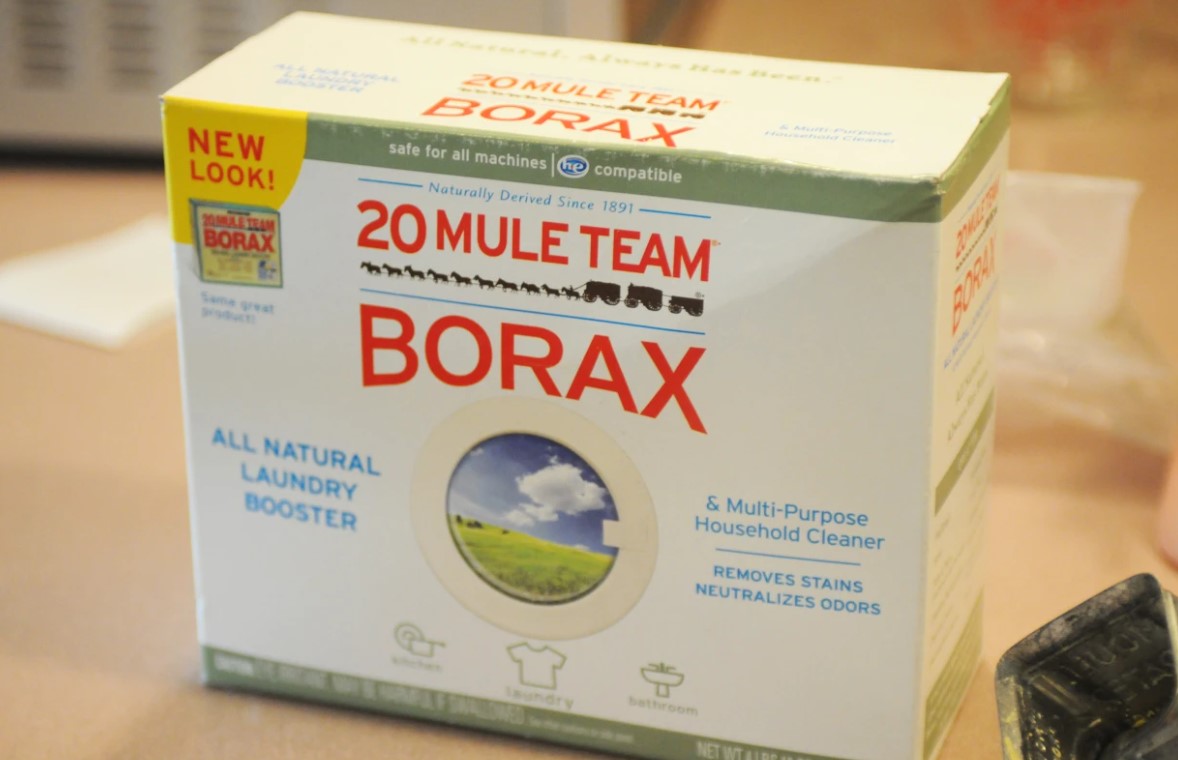
Despite what you see on TikTok, don't consume the laundry powder borax to relieve pain and inflammation or boost bone health.
Even though videos on the social media site tout it as a treatment, this substance is not safe to consume and could cause kidney failure and multi-organ damage, one expert says.
Dr. Karthik Ramani from Michigan Medicine explains why consuming borax is a bad idea.
TikTok videos have shown people washing down a pinch of the powder with water, supposedly to help with pain and inflammation, improve bone health and ease osteoarthritis.
Why people are consuming borax
They claim it's because borax contains boron, a trace element that's present in many foods. Boron is not classified as an essential nutrient for humans because research hasn't identified a clear biological function for it.
However, potential benefits of boron consumption include:
- Bone Health: Some studies suggest that boron might play a role in promoting bone health by aiding in the metabolism of calcium and magnesium. It might help reduce the risk of osteoporosis by supporting bone mineralization.
- Joint Health: Boron has been proposed to have anti-inflammatory properties, which could potentially benefit joint health and conditions like arthritis.
- Hormonal Balance: Boron could influence certain hormones in the body, such as estrogen and testosterone. Some research has indicated that boron might have a positive impact on hormonal balance.
- Cognitive Function: There is limited evidence to suggest that boron might be associated with improved cognitive function, but more research is needed to confirm this.
Boron is found naturally in the environment and is present in certain foods. In fact, plant foods, such as fruit, tubers and legumes, contain boron and are the safest way to consume the ingredient.
Foods that naturally contain boron include:
- Fruits: Apples, pears, grapes, peaches, plums, oranges, and raisins are among the fruits with higher boron content.
- Vegetables: Broccoli, cauliflower, carrots, onions, potatoes, and leafy greens like spinach and kale contain boron.
- Nuts: Almonds, hazelnuts, and peanuts are good sources of boron.
- Legumes: Beans, lentils, and peas also contain some boron.
It's important to note that although small amounts of boron can be beneficial, excessive consumption can be toxic.
Borax vs. boron and their dangers
"Borax is not boron -- it's a powdery white substance, also known as sodium borate, sodium tetraborate or disodium tetraborate," Ramani said in a Michigan Medicine news release.
It's also not a food-grade substance, a dietary ingredient or a pharmaceutically active ingredient. The U.S. Food and Drug Administration has not approved it for consumption as a food or beverage, Ramani said.
There are reports of acute poisoning causing acute kidney failure and multi-organ damage. This can include symptoms of nausea, vomiting, fatigue, malaise, itching and swelling of the feet. A person may need to be admitted to the hospital and may need dialysis to clear toxins and fluids periodically, Ramani added.
"If you believe you're experiencing kidney issues due to borax consumption you should contact a qualified health care professional, the local poison center or go to the nearest emergency room right away," he said.
Symptoms of poisoning may include severe symptoms of nausea, vomiting, skin rashes, an allergic reaction, respiratory problems, seizures, lack of responsiveness and significantly decreased urine output.
"I would caution families or parents of children from trying dangerous trends or fads like this on social media without first obtaining verifiable information from qualified websites such as FDA, NIH [National Institutes of Health] and consulting qualified health care professionals," Ramani said.
If you or someone you know eats or drinks borax, contact Poison Control immediately for expert advice. They can be reached online at www.poison.org or by phone at 1-800-222-1222.
Additionally, if you or someone you know is showing any signs of borax poisoning — like nausea, vomiting, or breathing difficulties, call 911 or go to the nearest hospital right away.
Combating pain and inflammation
If you are looking for safe ways to manage pain, inflammation, bone health, and osteoarthritis, it is important to consult with your healthcare provider.
The following lifestyle changes may also help:
1. Maintain a Healthy Diet:
- Consume a balanced diet rich in fruits, vegetables, whole grains, lean proteins, and healthy fats.
- Foods high in antioxidants, such as berries, leafy greens, and nuts, can help reduce inflammation.
- Omega-3 fatty acids found in fish like salmon, walnuts, and flaxseeds have anti-inflammatory properties.
2. Stay Active:
- Engage in regular low-impact exercise, such as walking, swimming, or cycling, to maintain joint mobility and improve bone health.
- Consult a physical therapist or healthcare professional for appropriate exercises that target your specific needs and limitations.
3. Maintain a Healthy Weight:
- Excess weight can put additional stress on joints, exacerbating pain and inflammation in conditions like osteoarthritis.
4. Stay Hydrated:
- Drinking enough water supports joint health and helps maintain the function of synovial fluid, which lubricates the joints.
5. Manage Stress:
- Chronic stress can contribute to inflammation. Engage in stress-reduction techniques such as meditation, deep breathing, or yoga.
6. Hot and Cold Therapy:
- Applying heat or cold packs to affected areas can help alleviate pain and reduce inflammation. Alternate between the two as needed.
7. Pain Management Techniques:
- Over-the-counter pain relievers (NSAIDs) can help manage pain and inflammation, but use them under the guidance of a healthcare provider.
8. Physical Therapy:
- A physical therapist can create a personalized exercise program to improve joint function, flexibility, and strength.
9. Medications:
- Your doctor may prescribe medications or injections to manage pain and inflammation associated with osteoarthritis.
10. Joint Protection:
- Use joint-friendly devices such as ergonomic chairs, supportive footwear, or assistive devices if needed.
11. Surgery (in severe cases):
- In advanced osteoarthritis cases, surgical options like joint replacement may be considered after consulting a specialist.









